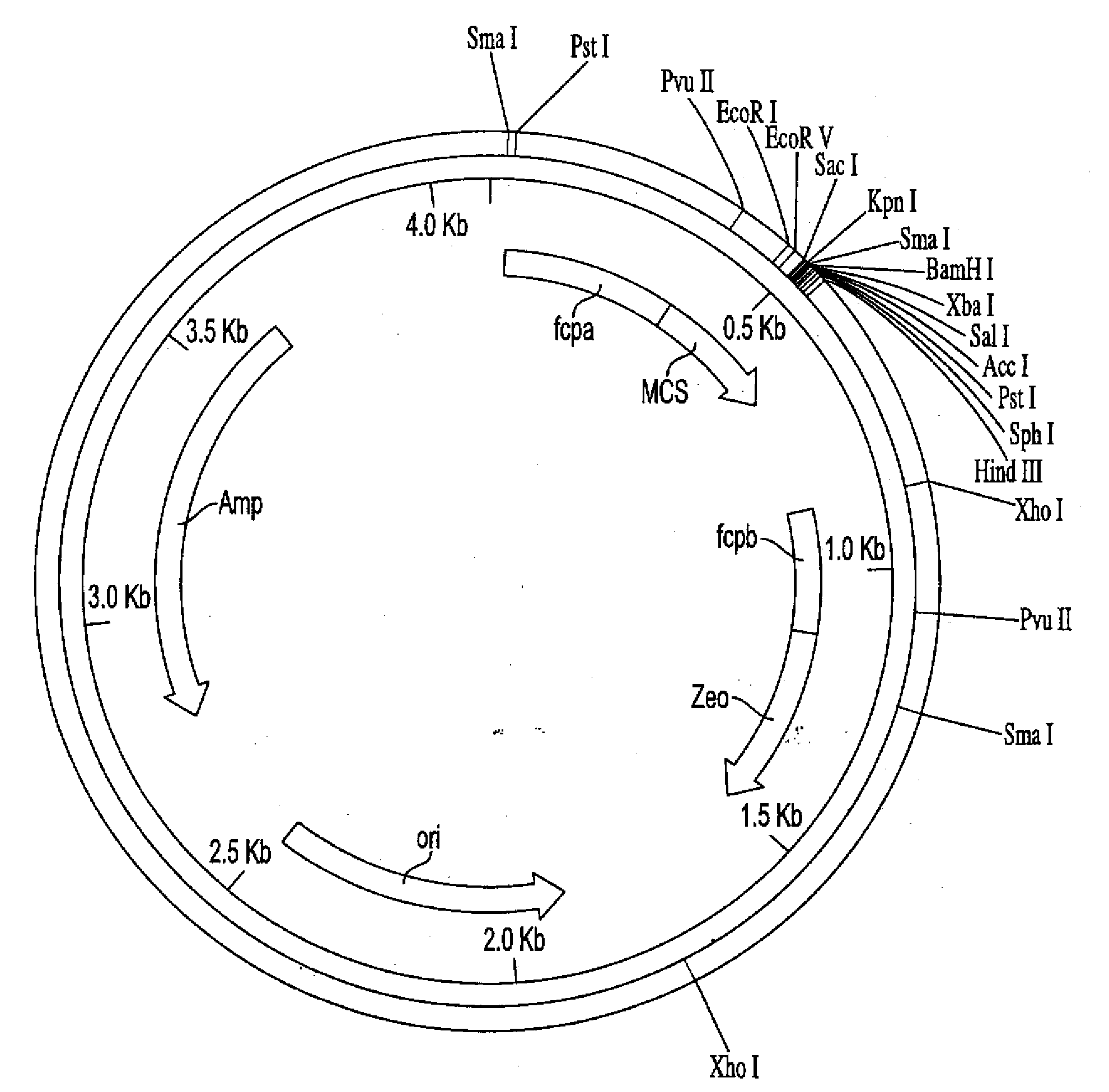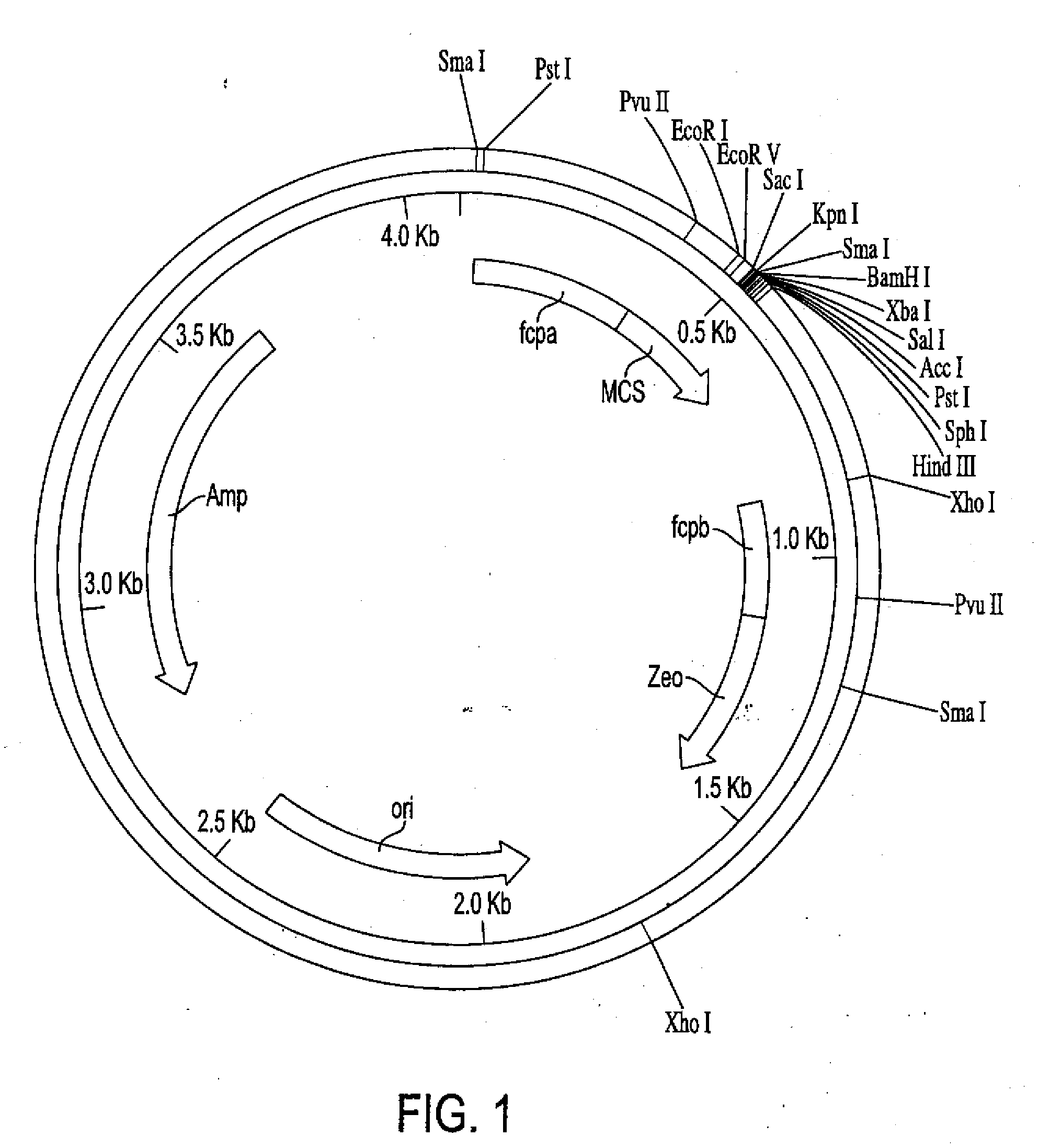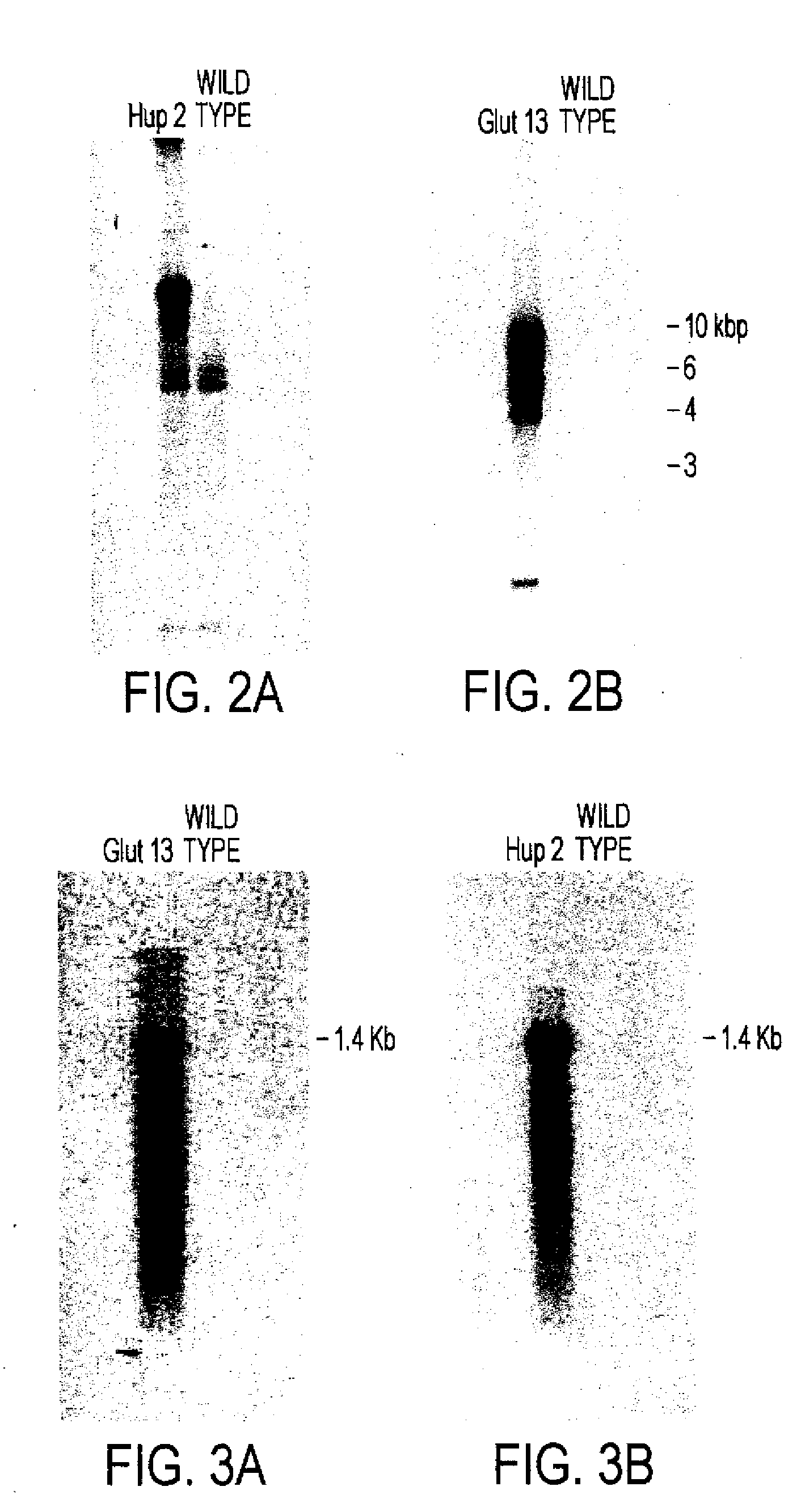Trophic conversion of obligate phototrophic algae through metabolic engineering
a technology of metabolic engineering and obligate phototrophic algae, which is applied in the direction of biochemistry apparatus and processes, microorganisms, enzymes, etc., can solve the problems of difficult to exclude contaminating organisms in an open pond, low biomass, and inability to utilize exogenous organic compounds (such as glucose, acetate, etc.) as energy or carbon sources for alga
- Summary
- Abstract
- Description
- Claims
- Application Information
AI Technical Summary
Benefits of technology
Problems solved by technology
Method used
Image
Examples
example 1
Antibiotic Sensitivity in Diatoms
[0115]The diatoms Phaeodactylum tricornutum, Cylindrotheca fusiformis, Cyclotella cryptica and Nitzschia alba were extensively tested for sensitivity to a series of antibiotics for which resistance genes are available, and the lowest concentrations which completely abrogate growth were determined for each antibiotic (Table C). Most of the antibiotics had no significant effect on growth or were effective only at very high concentrations compared to their effectiveness in abrogating growth of other eukaryotic organisms. These include antibiotics such as G418, Hygromycin, Kanamycin and Spectinomycin, which are routinely utilized for selection of other eukaryotic organisms.
[0116]For the diatoms tested, only the antibiotics zeocin and phleomycin resulted in cell death in 100% I.O. media (see Example 4 for description of media and growth conditions).
[0117]It was found that by lowering the concentration of the media to 50% I.O. or less the sensitivity of th...
example 5
Incorporation of Desired Genetic Inserts
[0135]Cells lines Glut-17 and Hup-2 were used to examine the integration and expression of the respective glucose transporters. Based on Southern blots (see, FIG. 2), Glut-17 appears to have one copy of glut1 and Hup-2 probably has multiple copies of hup1. RNA blots (see, FIG. 3) indicate that each cell line produces a transcript of the expected size.
[0136]Preparation of Nucleic Acids: for the Preparation of Total DNA, the Cells were pelleted by centrifugation (5,000×g for 10 min), lysed in 50 mM Tris-HCl, pH 8.0, 10 mM EDTA, 1.0% SDS, 10mM DTT, 10 μg / ml protease K, 20 μg / ml RNAse A and incubated at 37° C. for 15 min. The lysate was extracted with one volume of phenol:chloroform (1:1) and again with one volume of chloroform. The aqueous phase was collected and made 1.2 g / ml CsCl and 0.2 mg / ml ethidium bromide prior to centrifugation in a Beckman V665.2 rotor for 6 h at 55,000 rpm. The DNA band was collected, extracted with butanol, precipitate...
example 6
Localization of the Protein Expressed from the Inserted Gene
[0138]A more detailed characterization was performed for a number of the Glut transformants, including Glut-17 and Glut GFP-40. The latter strain was transformed with pPha-T 1 harboring the glut1 gene fused to GFP. Transformed cells were broken using a MinibeadBeater by two breakage cycles at full speed (30 sec for each cycle with 3-5 mm cooling on ice between cycles), and the membranes were pelleted by centrifugation at 100,000×g for 30 and then solubilized in 2% SDS. The solubilized proteins were resolved on a 7.5% polyacrylamide gel, transferred to nitrocellulose membranes (Towbin, et al. (1979) Proc. Natl. Acad. Sci. USA, 76:4350) and the Glut1 or GFP proteins were detected immunologically (Liscum, et al., (1995) Plant Cell, 7:473). Mono specific antibodies against the Glut1 polypeptide and GFP were used to demonstrate accumulation of Glut1 or the Glut1GFP fusion protein in transformed cell lines.
[0139]Membranes of the ...
PUM
| Property | Measurement | Unit |
|---|---|---|
| Time | aaaaa | aaaaa |
| Electrical resistance | aaaaa | aaaaa |
Abstract
Description
Claims
Application Information
 Login to View More
Login to View More - R&D
- Intellectual Property
- Life Sciences
- Materials
- Tech Scout
- Unparalleled Data Quality
- Higher Quality Content
- 60% Fewer Hallucinations
Browse by: Latest US Patents, China's latest patents, Technical Efficacy Thesaurus, Application Domain, Technology Topic, Popular Technical Reports.
© 2025 PatSnap. All rights reserved.Legal|Privacy policy|Modern Slavery Act Transparency Statement|Sitemap|About US| Contact US: help@patsnap.com



